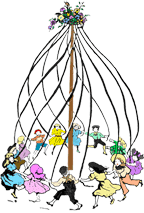Early Schools
In all the early settlements, the first public buildings were the combination meeting and schoolhouses. These were usually built right along with the private log houses, or immediately following. Until the combination meeting and schoolhouses were ready for use, the church meetings and public schools were held in some of the private homes. That earnest desire among the settlers to live their religion and to interest themselves in education was even in evidence before any of the public buildings were built. The combination meeting and schoolhouses became the real community centers where all the important problems were discussed. A number of these buildings were made of rock. A sample of one of these buildings is still in existence at Mendon.
A little later separate buildings were built for the public schools. The interior decorations and furnishings of these were very plain. They had rough pine floors and long tables around which sat the pupils on long slab benches with the smooth side up. There were no backs to the benches. An old cast-iron oblong stove was placed in one and or the center of the room and wood was used for fuel. The larger boys usually cut the wood for the stove to heat the building.
There were no graded schools and the pupil was known by the Reader he or she was in. The three R’s, reading, ‘riting and ‘rithmetic, were the principal subjects taught. A little geography was attempted but the textbooks cost so much that the teaching of the subject was almost prohibitive, Monteith’s geographies were used. The Blue Back Speller, Ray’s Arithmetic and McGuffy’s were the other textbooks used. According to Mark Sullivan, a noted authority on world topics and one of the most influential newspaper correspondents in the world today, thinks that McGuffey’s Reader had as much, if not more influence on the people of America as any other school book.
There were few lead pencils and little paper, and most of the work had to be done with the slate and slate pencil for the pupils and the blackboards for the teachers.
The larger boys did not enter school until late in the autumn and stopped in the early spring, as their help was needed to help provide for the family. At first the bishop selected the most capable man or woman in the settlement to be the teacher. The cost was usually $3.00 per term per child. This the teacher had to collect himself from the various families which had children in school. The pay for the teacher often came in the form of bacon, flour, molasses and other produce. Some of the smaller children were usually taught at the home of some elderly woman who was capable. Later, each settlement had a Board of Trustees to take charge of the schools and hire the teachers. The Trustees set the price of the tuition, but the teachers had to make the collections. Some paid and some did not.
The teacher usually stood next to the bishop in public affairs and in helping with all the social activities of the settlement and did a great deal to mould the right kind of citizenship. The influence of the schools and the good they did in those days would be difficult to estimate even as plain as they were and the poor equipment with which they had to work.
